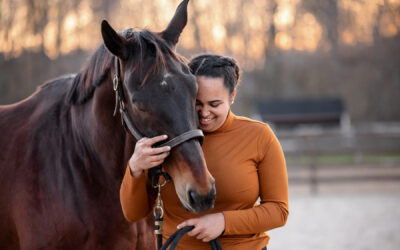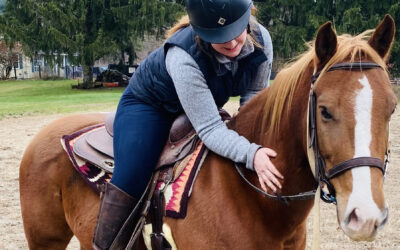Blog
Connecting Good People to Good Horses
Connecting Good People to Good Horses
Marketing is the process or technique of promoting, selling and distributing a product or service. Traditionally, marketing has not been the first priority for most adoption organizations. And rightfully so; the care of the horse is the first and most important focus. However, before a horse can be adopted into a loving home, the right person needs to be aware that the horse exists and is available for rehoming.
The Right Horse Initiative team attended an event last month where we had the opportunity to talk to an Arabian enthusiast who had been horse shopping for the past few months. She hadn’t found the right horse on the general market and was getting frustrated with her horse search. While she was interested in the concept, she expressed doubts that she could find the specific horse she desired through adoption. A passerby overheard this part of our conversation and interjected that she had previously felt the same way but had found a Halflinger mare at the first adoption organization she visited. Her testimony inspired other families at our booth to visit MyRightHorse.org and start their own quest to adopt.
What if this type of conversation was the norm instead of the exception? The American Horse Council’s 2017 Economic Impact Study estimates that there are 7.1 million people in the United States owning or working with horses. What if we could make the 7.1 million horse people aware that adoption is another great option when looking to acquire a horse?
That is exactly what we are trying to do alongside our partners at The Right Horse Initiative. Our goal is to massively increase horse adoption; and a big piece of achieving that goal is increasing the demand for adoptable horses. Through innovative programming and a targeted effort to bring awareness into new communities, we can make a significant impact on horses in transition. We need to evaluate and elevate our existing marketing practices.
Our media partners, Horse Illustrated and Western Horseman, have been instrumental in getting the word out about adoption to new audiences. Horse Illustrated is currently running an adoption drive that has adoption-centric content on both their digital channels and print publications. Western Horseman has joined us in collecting Western All-Star Adoption Stories to promote successful adoptions of horses competing in the Western disciplines. Additionally, we are running an ad campaign in both magazines to promote adoption.
As we work to reach new segments of the horse industry and promote the general idea of adoption, more and more people are starting to become aware that adoption is a good option. Now that adoption is a concept on more people’s radar, the next step is connecting them to organizations in their area and make the adoption process engaging and accessible.
Searching for horses, whether via sale or adoption, has historically been a frustrating effort due to poorly created ads, lack of transparency and a multitude of other factors. To address the general inconsistencies we have seen in marketing horses, we have developed a new web app called My Right Horse. My Right Horse streamlines the search for adoptable horses by listing hundreds of adoptable horses in one place. Users can browse horses much like they would on any other horse sale site; by breed, age, discipline or location. The app takes a user-centric approach to make adoption an approachable, familiar and friendly option. In just the first few months since the initial launch, My Right Horse has proved that there are thousands of potential adopters curious about adoption with over 100,000 monthly page views. Now that we are gaining the public’s attention, we need to be ready with professionally presented horses and listings.
The manner in which we present an adoptable horse is an important piece of attracting the right adopter. Collectively, we need to highlight the skills and abilities of each adoptable horse and pair them with attractive, and high quality photos. Language should be positive and well edited. For example, consider the difference in these two sentences: “20-year-old gelding requires a companion-only home only due to a past injury” or “An older gentleman, Pepper has exceptional ground manners and has a lot to offer in a home where he could teach children and novices about how to handle horses.”. The second statement focuses on the horse’s abilities in a positive and engaging way.
As adoption gains more national attention and becomes a more common piece of the horse person’s vernacular and understanding, it will become even more important to represent adoptable horses in a professional manner. The demand and interest in adoptable horses is increasing and marketing is the key piece that connects the perfect home with the right horse.
Over the next few months we will be exploring different methods of marketing that have been successful in increasing quality horse adoptions. Marketing is the center point of creating change for horses in transition. It is the way we present our horses, our organizations and the way we engage potential adopters. Ultimately, marketing is the way we help horses in transition find their new loving homes.


